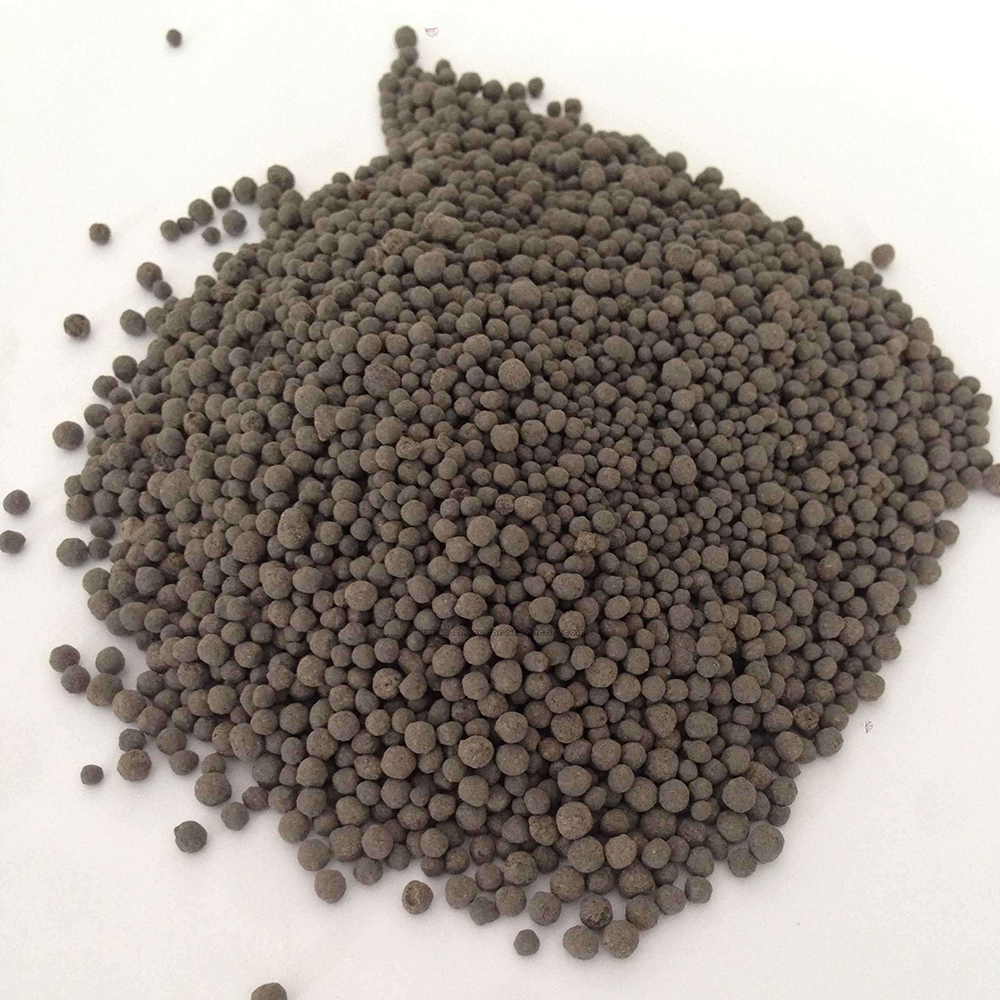



Boost Yields with Di Ammonium Phosphate (DAP) Fertilizer
Understanding Di ammonium Phosphate: A Cornerstone of Global Agriculture and Beyond
Di ammonium Phosphate, commonly known as DAP, stands as a critical component in modern agriculture. As a highly concentrated granular fertilizer, it provides two essential plant nutrients: Phosphorus (P) and Nitrogen (N), making it an indispensable asset for enhancing crop yield and quality worldwide. This comprehensive guide delves into the intricate world of DAP, exploring its industry significance, technical specifications, diverse applications, and the superior advantages offered by leading manufacturers like Fizachem. We will provide a deep dive into its manufacturing processes, demonstrate its value through real-world data and case studies, and address common inquiries to empower your decision-making process.
Global Industry Trends and Market Dynamics of Di ammonium Phosphate
The global fertilizer market is experiencing robust growth, driven by an increasing global population, shrinking arable land, and the imperative for higher agricultural productivity. Di ammonium Phosphate plays a pivotal role in this expansion. According to recent reports from the Food and Agriculture Organization (FAO) and various market research firms, the demand for phosphatic fertilizers, including DAP, is projected to rise steadily over the next decade. Key trends shaping this market include:
- Sustainable Agriculture Practices: A growing emphasis on nutrient use efficiency and soil health is driving demand for high-quality, precise fertilizers like DAP that minimize environmental impact while maximizing yield.
- Technological Advancements: Innovations in fertilizer production, including enhanced granulation techniques and controlled-release formulations, are improving the efficacy and longevity of products like Di ammonium Phosphate fertilizer.
- Regional Demand Shifts: Emerging economies in Asia, Africa, and Latin America are witnessing significant growth in fertilizer consumption as they strive for food security and agricultural modernization.
- Input Cost Volatility: Fluctuations in raw material prices (ammonia and phosphoric acid) and energy costs continue to influence the pricing and supply dynamics of DAP.
- Precision Agriculture Adoption: The rise of precision farming techniques, leveraging data analytics and smart technologies, necessitates fertilizers with consistent composition and predictable performance, attributes inherent in high-quality Di ammonium Phosphate products.
The market for Di ammonium Phosphate DAP is characterized by large-scale production, global trade networks, and intense competition, where product quality, logistical efficiency, and customer support are paramount.
Technical Parameters and Chemical Composition of Di ammonium Phosphate
Di ammonium Phosphate is an inorganic compound with the chemical formula (NH₄)₂HPO₄. Its high nutrient content makes it an excellent source of both nitrogen and phosphorus for plants. Below is a detailed table outlining typical product specifications and technical parameters for high-quality Di ammonium Phosphate:
Typical Di ammonium Phosphate Product Specifications
| Parameter | Specification Range | ISO/Industry Standard |
|---|---|---|
| Total Nitrogen (N) | 18.0% min | ISO 17354:2018 |
| Available P₂O₅ | 46.0% min | ISO 17354:2018 |
| Moisture Content | 1.5% max | ISO 7742:2008 |
| Particle Size (2-4mm) | 90% min | ISO 17354:2018 Annex A |
| pH Value (1% solution) | 7.8 - 8.2 | ASTM E70-19 |
| Granular Strength | 20N min (Individual Granule) | Internal Quality Control, typically correlated with bulk density |
| Water Insoluble Matter | 0.1% max | ASTM D5950-96 |
| Cadmium (Cd) | < 5 mg/kg | EU Regulation (EC) No 2003/2003, typically stricter than general standards for environmental protection |
| Arsenic (As) | < 5 mg/kg | FAO/WHO Joint Standards |
| Lead (Pb) | < 15 mg/kg | FAO/WHO Joint Standards |
| Chloride (Cl) | < 0.5% | Important for chloride-sensitive crops |
| Color | Brownish-Black to Grey | Visual inspection, characteristic of high-quality industrial DAP |
These parameters ensure that the Di ammonium Phosphate fertilizer is not only effective but also safe for application, minimizing heavy metal accumulation in soil and crops, an increasingly important consideration for global food safety standards.
Crafting Excellence: The Manufacturing Process of Di ammonium Phosphate
The production of Di ammonium Phosphate involves a precise chemical reaction followed by granulation and drying processes, ensuring a consistent and high-quality product. Fizachem employs advanced manufacturing techniques to produce superior DAP, adhering to stringent quality control at every stage. The core manufacturing process can be visualized as follows:
Manufacturing Process Overview: From Raw Materials to Granular DAP

- Raw Material Preparation:
- Phosphoric Acid (H₃PO₄): Sourced from phosphate rock, it's typically produced via the wet process (reaction of phosphate rock with sulfuric acid) and concentrated to the required strength (e.g., 40-54% P₂O₅).
- Ammonia (NH₃): Supplied as anhydrous ammonia, it's a gas that is carefully stored and metered for the reaction.
- Reaction Phase (Ammoniation):
- Description: Phosphoric acid and gaseous ammonia are reacted in a specialized pre-neutralizer or reactor. This highly exothermic reaction forms a slurry of monoammonium phosphate (MAP) and diammonium phosphate (DAP).
- Key Node: pH control is crucial here. The pH is carefully maintained between 5.8-6.0 for efficient DAP formation, moving towards 7.8-8.2 in the granulator, ensuring the correct stoichiometric ratio of ammonia to phosphoric acid to maximize the yield of DAP (NH₄)₂HPO₄ and minimize the formation of monoammonium phosphate (NH₄)H₂PO₄.
- Equation: H₃PO₄ + 2NH₃ → (NH₄)₂HPO₄ (simplified)
- Granulation:
- Description: The hot, concentrated slurry from the reactor is then transferred to a granulator (e.g., a rotating drum granulator or a pugmill). Recycled fine particles (oversize and undersize from screening) are added to the granulator to act as nuclei for new granules. Water is sprayed to facilitate the agglomeration of particles into uniform granules.
- Key Node: Granule formation and size control. Parameters like feed rate, recycle ratio, and water addition are meticulously controlled to achieve the desired particle size distribution, typically 2-4 mm, which is ideal for spreading and nutrient release.
- Manufacturing Process Note: Unlike metal components which use casting or forging, DAP production utilizes a chemical reaction followed by granulation to form solid particles. This process demands precision in chemical engineering and material handling.
- Drying:
- Description: The wet granules from the granulator are fed into a rotary dryer, where hot air flows counter-currently to reduce the moisture content.
- Key Node: Moisture content reduction. Optimal drying ensures product stability, prevents caking during storage, and maintains granule integrity. The target moisture content is typically less than 1.5%.
- Screening:
- Description: Dried granules are passed through screens to separate them into desired size fractions. Oversize granules are crushed and recycled, while undersize fines are also recycled back to the granulator.
- Key Node: Particle size uniformity. This step guarantees that the final product meets stringent particle size specifications, crucial for efficient spreading and uniform nutrient distribution in the field.
- Cooling:
- Description: The correctly sized granules are then cooled in a rotary cooler to bring their temperature down to ambient levels, preventing caking and ensuring safe storage.
- Key Node: Temperature control for stability. Rapid cooling enhances granule hardness and reduces moisture reabsorption.
- Coating (Optional but Recommended):
- Description: Some manufacturers apply a thin layer of anti-caking agent to the cooled granules to prevent clumping during storage and transport, especially in humid conditions.
- Key Node: Enhanced storage and handling. This step significantly improves the product's shelf life and usability.
- Packaging and Storage:
- Description: The finished Di ammonium Phosphate DAP is conveyed to storage silos or directly to packaging lines, where it is bagged in various sizes (e.g., 50kg bags, bulk bags) or prepared for bulk shipment.
Throughout this process, stringent quality control measures are applied, including regular chemical analysis, particle size distribution checks, and moisture content testing, to ensure the final product consistently meets or exceeds ISO and industry standards.
Material Excellence and Quality Assurance
Fizachem's commitment to quality begins with the selection of premium raw materials and extends through every stage of manufacturing. We utilize high-purity phosphoric acid and ammonia to ensure the precise stoichiometric di ammonium phosphate formula and minimize impurities.
- Material Purity: Our raw materials are rigorously tested upon arrival to ensure they meet our strict purity standards, minimizing heavy metals and other undesirable elements that could impact crop health or soil quality.
- Manufacturing Process Control: Our state-of-the-art facilities employ automated control systems for reaction parameters, temperature, and moisture, ensuring consistency in every batch of Di ammonium Phosphate.
- Inspection Standards: All batches of DAP undergo comprehensive testing against international standards such as ISO 17354 (for Fertilizers), ISO 9001 (Quality Management Systems), and often country-specific agricultural chemical regulations (e.g., ANSI/ASABE standards for fertilizer properties in North America, or European Union fertilizer regulations). These tests include nutrient content analysis, particle size distribution, crush strength, and heavy metal analysis.
- Quality Certifications: Fizachem holds ISO 9001 certification, demonstrating our commitment to a robust quality management system. Our products frequently meet or exceed the requirements of various national agricultural ministries and international bodies.
- Product Lifespan and Storage: When stored correctly in cool, dry conditions away from direct sunlight and moisture, Fizachem's Di ammonium Phosphate fertilizer has an indefinite shelf life without significant degradation of its nutritional value. Its excellent granular strength prevents crushing and dust formation, further extending its usability.
Versatile Application Scenarios of Di ammonium Phosphate
While primarily known for its role in agriculture, the properties of Di ammonium Phosphate lend it to various applications. Its high solubility and balanced nutrient profile make it ideal for numerous scenarios:
- Agriculture (Primary Use):
- Broadacre Crops: Widely used for corn, wheat, rice, soybeans, and other staple crops globally. It provides a readily available source of phosphorus essential for root development, flowering, and seed formation, along with nitrogen for vegetative growth.
- Horticulture: Applied to fruits, vegetables, and ornamental plants, promoting vigorous growth and higher yields.
- Pasture and Forage: Enhances the quality and quantity of livestock feed by improving grass and legume growth.
- Soil Amendment: Can be used to correct phosphorus deficiencies in various soil types, particularly in neutral to alkaline soils where phosphorus availability can be an issue.
- Industrial Applications:
- Fire Retardants: DAP's ability to release ammonia and phosphoric acid upon heating makes it an effective fire retardant for wood, textiles, and paper.
- Water Treatment: Used in some water treatment processes as a nutrient source for biological phosphorus removal.
- Food Additive (Yeast Nutrient): In some food processes, particularly brewing and winemaking, DAP can serve as a yeast nutrient to promote fermentation.
- Metal Finishing: Minor applications in certain metal surface treatments.
Example Application Advantage: In irrigated agricultural systems, Di ammonium Phosphate DAP exhibits superior energy-saving advantages. Its high concentration means less volume is required per acre, leading to reduced transportation costs and fewer application passes with machinery. Its rapid solubility ensures quick nutrient uptake by plants, optimizing fertilizer use and minimizing runoff, thus enhancing environmental sustainability. For fields requiring specific pH adjustments, its slightly alkaline nature can also be beneficial.
Fizachem's Technical Advantages in Di ammonium Phosphate Production
Fizachem distinguishes itself in the market through a combination of cutting-edge technology, stringent quality control, and an unwavering commitment to customer satisfaction. Our advantages include:
- Superior Granule Uniformity: Our advanced granulation process ensures highly uniform granule size (typically 2-4mm), leading to better spreading accuracy in the field, minimizing nutrient hot spots, and ensuring even crop development. This uniformity also prevents segregation during transport and storage.
- Optimized Nutrient Release: The specific formulation and manufacturing process of Fizachem's Di ammonium Phosphate fertilizer ensure a controlled yet readily available release of N and P, synchronizing with plant nutrient demands throughout the growth cycle.
- Low Dust and High Crush Strength: Our DAP granules are exceptionally robust, resistant to crushing during handling and transportation, which reduces dust formation. This improves air quality during application and minimizes product loss, translating to better value for farmers.
- Low Heavy Metal Content: We go beyond standard requirements to ensure our DAP has minimal levels of heavy metals like Cadmium and Arsenic, safeguarding soil health and food safety, aligning with global regulatory trends like those from the European Commission on fertilizer products.
- Customization Capabilities: Fizachem offers tailored solutions, including specific packaging, blend options, or specialized formulations to meet unique agricultural demands or regional soil conditions. For instance, we can provide formulations with trace elements upon specific request for deficiency correction.
Manufacturer Comparison: Why Choose Fizachem for Your Di ammonium Phosphate Needs?
In a competitive market, choosing the right supplier for Di ammonium Phosphate is crucial. While many manufacturers offer DAP, Fizachem stands out due to several key differentiators:
| Feature | Fizachem Di ammonium Phosphate | Typical Competitor Product |
|---|---|---|
| Product Consistency | Excellent (Tight control on N, P, and particle size, ISO 9001 certified) | Variable (May have wider ranges in nutrient content and size) |
| Granule Quality | High Crush Strength (20N+), Low Dust, Uniform Size (2-4mm > 90%) | Moderate (Prone to dust, inconsistent size, lower crush strength) |
| Heavy Metal Purity | Ultra-low (Cd < 5 mg/kg, As < 5 mg/kg), often exceeding international standards | Meets minimum standards, may contain higher traces |
| Technical Support & Customization | Dedicated technical team, bespoke formulation/packaging, agronomic advice | Standard products only, limited support |
| Supply Chain Reliability | Robust global logistics, consistent delivery, flexible order quantities | Can be prone to delays, less flexible on orders |
| Certifications & Compliance | ISO 9001, adheres to EU/US/FAO standards, rigorous internal QA/QC | Basic certifications, less emphasis on comprehensive QC |
| Experience & Authority | Decades of industry experience, trusted by major agricultural corporations, published research collaborations | Newer to market or less established track record |
Fizachem's long-standing industry presence, coupled with our commitment to continuous improvement and customer-centric approach, positions us as a reliable and authoritative source for premium Di ammonium Phosphate. Our rigorous quality control processes, from raw material sourcing to final packaging, ensure that every shipment delivers consistent, high-performance fertilizer.
Customized Solutions and Real-World Application Cases
Fizachem understands that agricultural needs are diverse. We offer customized solutions to address specific soil conditions, crop requirements, and application methods. Our expertise in Di ammonium Phosphate formula and production allows us to tailor products that maximize efficiency and yield for our clients.
Customization Options:
- Nutrient Blending: DAP can be blended with other essential nutrients (e.g., Potassium, Sulfur, Micronutrients) to create balanced fertilizers tailored for specific crop types or soil deficiencies, addressing the full spectrum of a plant's nutritional needs.
- Particle Size Customization: While our standard 2-4mm granules are highly efficient, we can adjust particle size for specific spreading equipment or specialized application methods.
- Packaging Solutions: From bulk shipments to various bag sizes (25kg, 50kg, 1000kg jumbo bags), we provide flexible packaging options to suit logistical and end-user requirements, reducing waste and improving handling efficiency.
Application Case Studies:
Case Study 1: Enhancing Maize Yield in Arid Regions
A large-scale agricultural enterprise in a semi-arid region faced challenges with low maize yields due to phosphorus and nitrogen deficiencies and poor water retention. Fizachem provided Di ammonium Phosphate DAP with a customized anti-caking coating for better storage in humid conditions and optimized particle size for their precision spreading equipment. Our technical team advised on optimal application timing and rates. After one growing season, the client reported a 15% increase in maize yield compared to previous seasons, attributing the success to the consistent quality and precise nutrient delivery of Fizachem's DAP, which facilitated improved root development and water-use efficiency in the challenging climate. The consistency in granule size allowed for uniform distribution, preventing nutrient 'hot spots' and ensuring even crop development.
Case Study 2: Improving Rice Productivity in Delta Regions
A cooperative of rice farmers in a delta region struggled with soil phosphorus fixation and nutrient leaching during monsoon seasons. Fizachem supplied Di ammonium Phosphate fertilizer known for its slow-release properties and high water solubility, ensuring nutrients were available to rice plants even in flooded conditions. Our experts collaborated with local agronomists to develop an application strategy that minimized nutrient loss. The result was a notable increase in rice grain quality and a 10% average increase in yield across the cooperative, demonstrating the product's efficacy in high-leaching environments and its contribution to sustainable rice cultivation practices.
Case Study 3: Forestry Reforestation Project
A government-led reforestation initiative required a highly effective starter fertilizer for young saplings in degraded forest lands. The challenge was to provide essential nutrients for robust early growth while minimizing environmental impact. Fizachem supplied a specific grade of Di ammonium Phosphate known for its controlled solubility, which allowed for sustained nutrient release into the root zone over a longer period. This approach reduced the need for repeated applications and supported the healthy establishment of millions of tree saplings, leading to higher survival rates and faster initial growth, crucial for ecological restoration projects.
Frequently Asked Questions (FAQ) about Di ammonium Phosphate
To provide further clarity and enhance trust, here are answers to some common questions regarding Di ammonium Phosphate:
- Q1: What is the primary use of Di ammonium Phosphate (DAP)?
- A1: The primary use of Di ammonium Phosphate is as a highly effective, granular fertilizer in agriculture. It provides both phosphorus (P) and nitrogen (N) which are essential macronutrients for plant growth, particularly important for root development, flowering, and overall plant vigor across a wide range of crops.
- Q2: What is the typical nutrient analysis of DAP?
- A2: Standard Di ammonium Phosphate has a nutrient analysis of 18-46-0. This means it contains 18% nitrogen (N) and 46% available phosphorus (P₂O₅), with 0% potassium (K₂O). The nitrogen is present as ammonium nitrogen (NH₄⁺), and the phosphorus is in the form of phosphate (HPO₄²⁻).
- Q3: Is DAP safe for all crops?
- A3: Yes, DAP is generally safe and highly effective for most crops. However, it is slightly alkaline (pH around 7.8-8.2), which can be beneficial in acidic soils. Care should be taken when applying it close to germinating seeds or young seedlings, as high concentrations of ammonia released during dissolution can cause seedling burn if not properly managed (e.g., placed away from the seed row or incorporated into the soil).
- Q4: How should Di ammonium Phosphate be stored?
- A4: Di ammonium Phosphate should be stored in a cool, dry place, away from direct sunlight and moisture. It is hygroscopic, meaning it can absorb moisture from the air, which may lead to caking. Storing it in sealed bags or well-ventilated silos is recommended to maintain its free-flowing granular form and extend its shelf life. Avoid mixing it with urea, as this can lead to ammonia volatilization and product degradation.
- Q5: What are the environmental considerations when using DAP?
- A5: When used responsibly and according to recommended application rates, Di ammonium Phosphate fertilizer contributes to sustainable agriculture. Over-application, however, can lead to nutrient runoff into waterways, contributing to eutrophication. Fizachem's low heavy metal content DAP further minimizes environmental impact. Best management practices, including soil testing and precision application, are crucial for environmental stewardship.
- Q6: What is the difference between MAP (Monoammonium Phosphate) and DAP?
- A6: Both MAP and DAP are excellent sources of phosphorus and nitrogen. The key difference lies in their N:P ratio and pH. MAP (11-52-0) contains more phosphorus relative to nitrogen and is slightly acidic (pH ~4.0-4.5). DAP (18-46-0) has a higher nitrogen content and is slightly alkaline (pH ~7.8-8.2). The choice between MAP and Di ammonium Phosphate DAP depends on soil pH, specific crop nutrient requirements, and application method.
- Q7: Can DAP be used in foliar applications or fertigation?
- A7: While Di ammonium Phosphate is highly soluble, it is primarily designed for soil application due to its relatively high salt index and potential for foliar burn if applied directly to leaves in high concentrations. For foliar feeding or fertigation, other highly soluble, less concentrated phosphorus sources (like monopotassium phosphate or specific liquid formulations) are often preferred to avoid plant damage and ensure efficient uptake. However, some very dilute solutions of DAP might be used in specific fertigation systems under expert guidance.
Reliable Delivery and Unwavering Trust: Fizachem's Commitment
At Fizachem, we understand that timely delivery and dependable support are as crucial as product quality. We are committed to ensuring a seamless experience for our clients globally.
- Delivery Cycle: Our robust logistics network and strategic warehousing enable efficient order processing and delivery. Standard delivery cycles typically range from 2-4 weeks for international shipments, depending on destination and volume. Expedited shipping options are available for urgent requirements. We provide real-time tracking and dedicated account managers to keep you informed every step of the way.
- Quality Assurance & Warranty: Fizachem stands behind the superior quality of its Di ammonium Phosphate. All our products are manufactured under strict ISO 9001:2015 certified quality management systems and undergo rigorous pre-shipment inspections. We offer a comprehensive product warranty covering adherence to specifications and quality as per the agreed-upon standards. In the unlikely event of any quality deviation, our dedicated customer support team is committed to prompt resolution and client satisfaction. Our average service life for product effectiveness, when stored correctly, is virtually indefinite, demonstrating our confidence in its stability and performance.
- Customer Support: Our expert team is available 24/7 to provide technical assistance, application guidance, and answer any queries regarding our Di ammonium Phosphate fertilizer. From initial consultation to post-delivery support, we partner with you to ensure optimal results and maximize the value of your investment. Our service extends globally, providing support in multiple languages and time zones.
Conclusion: The Future of Nutrient Management with Fizachem's Di ammonium Phosphate
Di ammonium Phosphate remains an indispensable asset in the pursuit of global food security and sustainable agricultural practices. Its unique chemical properties and high nutrient content make it a superior choice for farmers and industrial users worldwide. Fizachem, with its unwavering commitment to quality, advanced manufacturing processes, and comprehensive customer support, stands as a premier provider of this essential compound.
By offering products that exceed industry standards in purity, consistency, and performance, coupled with tailored solutions and reliable delivery, Fizachem empowers its clients to achieve higher yields, greater efficiency, and more sustainable operations. We believe in building long-term partnerships based on trust, transparency, and a shared vision for a more productive and environmentally conscious future.
Further Reading and References
For more in-depth information on Di ammonium Phosphate and its role in agriculture, consider exploring the following authoritative resources:
- International Fertilizer Association (IFA): Provides statistics, reports, and analyses on global fertilizer markets and sustainable nutrient management. https://www.fertilizer.org
- Food and Agriculture Organization of the United Nations (FAO): Offers comprehensive data and publications on agricultural production, food security, and fertilizer use trends. https://www.fao.org
- "Fertilizers and Environment" – A comprehensive guide from the International Potash Institute (IPI) on nutrient management and environmental considerations. (While IPI focuses on K, their resources often cover broader fertilizer use context including P and N). https://www.ipi-potash.org/publications/fertilizers_and_environment
- "Phosphorus Management for Sustainable Crop Production" - A review article discussing various aspects of phosphorus fertilizers, including DAP, in academic journals like the Journal of Environmental Quality or Agronomy Journal. (Specific journal article link may vary, but these journals are reliable sources for this topic). For instance, search for articles within academic databases like ScienceDirect or Wiley Online Library.
-
Why Sodium Persulfate Is Everywhere NowNewsJul.07,2025
-
Why Polyacrylamide Is in High DemandNewsJul.07,2025
-
Understanding Paint Chemicals and Their ApplicationsNewsJul.07,2025
-
Smart Use Of Mining ChemicalsNewsJul.07,2025
-
Practical Uses of Potassium MonopersulfateNewsJul.07,2025
-
Agrochemicals In Real FarmingNewsJul.07,2025
-
Sodium Chlorite Hot UsesNewsJul.01,2025










